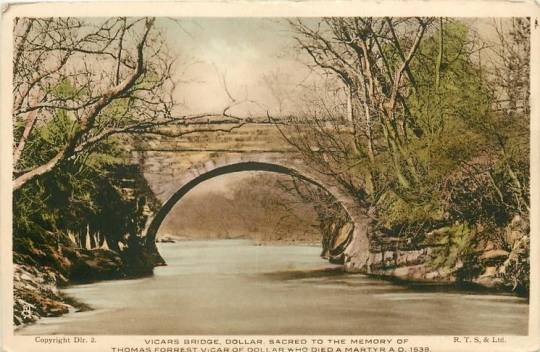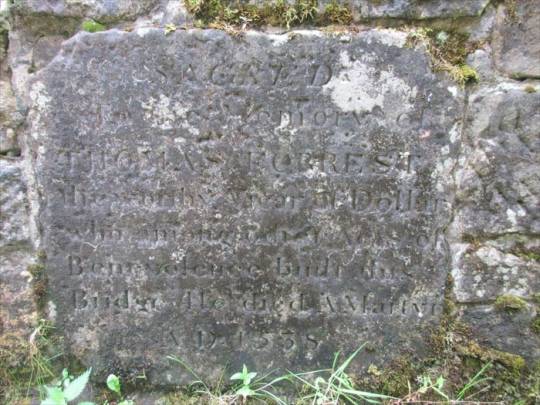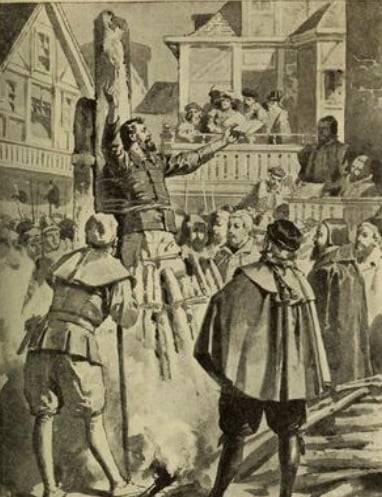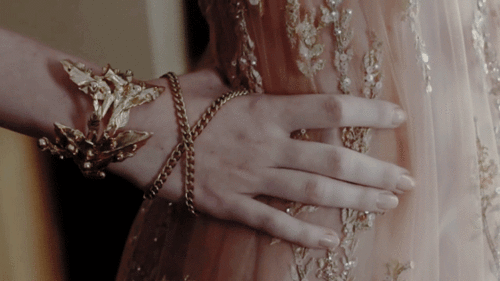#lord kinross
Explore tagged Tumblr posts
Text
The Scottish Highlands 🏴 is the largest region in Scotland and was unsurprisingly named as one of National Geographic's "Best of the World" destinations. Visitors can explore medieval castles, the mysterious Loch Ness, passing through the striking Glencoe National Nature Reserve and Cairngorms National Park, or discover the rugged coastline of Caithness in the Far North of Scotland.
Inverness, Capital of the Highlands!
The city of Inverness has played a key role: throughout Scottish history. It was the capital of the Picts in the Middle Ages, during which time St. Columba visited in 565, converting the King of the Picts to Christianity.
The kingdom of Alba would later be created when the kingdoms of the Scots and Picts were united in 843. This developed into the Scotland we know today. Two hundred years later, Macbeth is said to have murdered King Duncan in his castle in Inverness.
During this era, the town was the site of many battles and skirmishes. One of the most destructive occurred when the Abbot of Arbroath had his men burn down large parts of the town. The town was burnt down a second time in 1411 by Donald, Lord of the Isles.
During the Early Modern Age, was substantial tension between the Highlands and the Scottish crown. This was shown in 1562 when the governor refused Mary, Queen of Scots entry - an act he would go on to be hanged for. In 1746 Inverness Castle was captured by Jacobites. When they were defeated at Culloden in April, the rebels were sacked from the castle. A large fortification was built to prevent such uprisings from occurring again.
The industry of Inverness was largely related to shipbuilding from the Middle Ages, however, other industries grew such as whisky distilling. By the late 20th century, industry in Inverness had been transformed. Although it was still a busy port, tourism had become a major industry in the region, in large part due to the myth of the Loch Ness monster.
The Highland Council is the administrative body for much of the Highlands, with its administrative centre at Inverness. However, the Highlands also includes parts of areas of Aberdeenshire, Angus, Argyll and Bute, Moray, North Ayrshire, Perth and Kinross, Stirling and West Dunbartonshire.
By @castlesofscotland
Posted 28th January 2025
18 notes
·
View notes
Text
Court Circular | 13th November 2024
St James’s Palace
The Princess Royal this morning visited the College of Master Kilt Tailors’ Headquarters at Askival of Strathearn, Kirkton of Mailer, Craigend, and was received by His Majesty’s Lord-Lieutenant of Perth and Kinross (Mr Stephen Leckie).
Her Royal Highness later opened Letham4All’s Letham Community Hub, Amulree Road, Letham, Perth.
The Princess Royal this afternoon opened the YMCA Tayside Youth Centre, 19 Atholl Street, Perth.
Her Royal Highness, Warden, Gordonstoun School, later received Ms Lisa Kerr upon relinquishing her appointment as Principal and Mr Peter Green upon assuming the appointment.
The Princess Royal, Chancellor, the University of Edinburgh, this evening held a Chancellor’s Dinner at the Palace of Holyroodhouse and was received by His Majesty’s Lord-Lieutenant of the City of Edinburgh (Councillor Robert Aldridge, the Rt Hon the Lord Provost).
12 notes
·
View notes
Text



On 28th February, 1539, Thomas Forret, the Vicar of Dollar, John Keillor and John Beveridge, two black-friars, Duncan Simpson a priest, and a gentleman named Robert Forrester, were all burned together on the Castle Hill on a charge of heresy.
The persecution of Protestants in Scotland, at least if measured in martyrdoms, peaked in 1539, shortly after Cardinal David Beaton, a zealous opponent of reform, was appointed primate of the country, although from the info I have picked up one John Lauder, would have been the man condemning these men, he was Scotland’s Public Accuser of Heretics at the times. Heretics being anyone who didn’t follow the Catholic faith.
Of the five “heresiarchs” executed in Edinburgh, none had quite so fascinating a tale as Thomas Forret, an Augustinian monk turned Vicar whose passion for Scripture and preaching, coupled with frank observation of the institutional Church’s doctrinal and practical failings, earned him a place at the stake at the crest of the Royal Mile, just east of Edinburgh Castle.
Forret had been warned by the high heid yins about his behaviour on the pulpit a few times, one occasion said his sermons might lead to “make the people thinke” but, a very smart man, he rebuked the accusations of going against the lords work by quoting scriptures and his quick wit. At the time in Scotland the sermons were traditionally performed by “Black Friars” and “Grey Friars” That’s Dominican and Franciscan Monks to you and I!
It would all come undone in 1539 when Forret attended the wedding of the Priest of Tullibody, which attendance, no less than the marriage itself, flouted the Church’s stance position on clerical celibacy. Forret had added insult to injury by eating meat at his fellow curate’s wedding celebration, despite the fact that it was Lent.
So grievous were Forret’s collective crimes that, at his trial, he was condemned to death “without anie place for recantatioun.”
Subsequently brought to the place of his execution, a certain Friar Hardbuckell encouraged him to save his soul by confessing his faith in God. “I beleeve in God,” Forret replied. Hardbuckell then encouraged him to confess his faith in the Virgin Mary by adding the words “and in our Ladie.” Forret answered, “I beleeve as our Ladie beleeveth,” thereby maintaining to the end the perfect and full sufficiency of Christ’s saving work for sinners.
Forret’s wit and knowledge of Scripture stayed with him to his very last breath. Having been preceded to the gallows by one of his fellow martyrs, Forret called the same a “wily fellow” who wished to arrive at the feast awaiting them in heaven before the others in order to secure a good seat. As the noose was placed around his neck, he began to recite Psalm 51 in Latin: Misere mei, Deus, secundum magnam misericordiam tuam. “Have mercy on me, O God, according to your steadfast love.” Thus he continued “till they pulled the stoole frome under his feete, and so wirried [hanged], and after burnt him.”
Pics are of a memorail stone and bridge over the River Devon between the village of Blairingone and Dollar on the border of Clackmannanshire and Kinross-shire
Much more on the unfortunate man here https://www.reformation21.org/.../scotlands-protestant...
15 notes
·
View notes
Text
Canticle // Chapter 76
Time for the Friday update, Canticle comrades! In this chapter, Mirk has a few unsettling conversations...and comes to some questionable conclusions.
See you on Monday for the fallout from all this hullabaloo!
#writing#mm romance#reading#romantasy#web serial#grumpy x sunshine#royal road#historical fantasy#historical romance#slow burn#ao3 original work
2 notes
·
View notes
Note
sence neden erkek gururu diye bir kavram oluşmuş
“orta osmanlı türkü, erkeklik gururu ve zorbalık duygusu ile, kadını aşağı bir yaratık, ahlak ve onurdan yoksun dişi bir hayvan gibi görür, zayıf içgüdüsü nedeniyle erkek tarafından korunması gerektiğine inanırdı.”
lord kinross, atatürk
5 notes
·
View notes
Text

Earle Robert Case, BJU Class of 1958.
Earle Robert Case passed into the presence of His Lord and Savior, Jesus Christ, his soul perfected in holiness, on Sunday, October 13, 2024, age 89. Those left behind are his wife of 60 years, Doris (Morgan) Case, who lovingly cared for him through his years of Alzheimer's disease; his three daughters: Elena (Case) Smith of Greenville, SC; Janet Case, Greenville, SC; and Julie Case of Lannon, WI; his brothers: Leroy Case of Kincheloe, MI; Donald Case, Kinross, MI; and Jon Case of Akron, OH; his sister, Naomi (Case) Hoeflinger of Grand Haven, MI and San Antonio, TX; 6 grandchildren; 2 great-grandchildren; and numerous cousins, nephews, nieces, and their children.
Earle had a delightful sense of humor and loved to make people laugh. He was talented musically, played the trombone, sang in groups, and led various small choirs throughout his lifetime. He is probably best known for having dedicated 25+ years of his life in missionary work in Mexico and Chile, spreading the gospel of the One who had redeemed him from his sins; the One he is now seeing face to face in glory.
The family will hold a private interment at Sunnyside Cemetery, 19011 West Main Street, Lannon, Wisconsin on Thursday, October 17, 2024. Visitation will be held from 10:30 AM – 11:30 AM and Earle's memorial service will follow at 11:30 AM – 12:30 PM on Saturday, November 9, 2024, at Falls Baptist Church, N69 W12703 Appleton Avenue, Menomonee Falls, Wisconsin.
Thank you to all who prayed for him and the family prior to, during, and since his homegoing. "Absent from the body, present with the Lord." 2 Corinthians 5:8
#Bob Jones University#BJU Hall of Fame#Class of 1958#Earle Robert Case#Obituary#BJU Alumni Association
1 note
·
View note
Video
In Which We Serve (1942) | Noel Coward, John Mills, Bernard Miles | Movie Classics
The movie is based on the true story of Lord Mountbatten's destroyer, the film unfolds in flashback as it opens with survivors clinging to a dinghy, and then it interweaves the history of their ship with the lives of her crew. You do not have to love war films to appreciate this movie. Noel Coward produced, wrote the screenplay, composed the score, and starred as Captain Edward Kinross. Coward also officially co-directed, though he handed the reigns to David Lean (his directorial debut). The film also stars: John Mills, Bernard Miles, Celia Johnson, Kay Walsh, and Joyce Carey You are invited to join the channel so that Mr. P can notify you when new videos are uploaded, https://www.youtube.com/@nrpsmovieclassics
0 notes
Text
Atatürk Bir Milletin Yeniden Doğuşu
Bir gün, karargâha yeni gelmiş olan bir telsizciye, İstanbul’da neler olup bittiğini sormuştu. Adam, “Çok üzücü şeyler efendim,” diye anlatmaya başladı. “Eski görenekler hep unutuluyor. Kadınlarımız önüne gelen yerde peçelerini açmaya başlıyorlar.” Mustafa Kemal, meydan okurcasına, bu gibi şeylerin burada, doğu illerinde de olması gerektiğini ileri sürdü. Hemen, Zabitan Mahfeli’nde bir danslı toplantı düzenledi ve dolaylardaki birkaç Ermeni hanımını da, Türk subaylarına dansta eşlik etsinler diye çağırdı.
Atatürk Bir Milletin Yeniden Doğuşu, Lord Kinross
3 notes
·
View notes
Text
Osmanlı İmparatorluğun Yükselişi ve Çöküşü / Lord Kinross
Osmanlı İmparatorluğun Yükselişi ve Çöküşü / Lord Kinross
Osmanlı İmparatorluğun Yükselişi ve Çöküşü Osmanlı İmparatorluğun Yükselişi ve Çöküşü’nden… Osmanlı Hanedanı’nın ilk günleri efsanelerle sarmalanmıştır. Söylentilere göre kurucusu Ertuğrul adında küçük bir boyun lideriydi. Ertuğrul dört yüz kadar atlının başında Küçük Asya’da göç yolculuğu yaparken tanımadığı iki savaşçı grubu arasındaki kavgaya tanık olmuştu. Şövalyelik ruhunun etkisiyle…

View On WordPress
0 notes
Photo



(Almost) Every Costume Per Episode + Greer of Kinross’s embellished tulle peplum pop, black skirt, and copper jacket in 1x17
#Reign#ReignEdit#Reign Edit#Greer of Kinross#Greer Norwood#1x17#Liege Lord#weloveperioddrama#perioddramaedit#costumeedit#costumes#costume edit#costume drama#costume set#costume series#Almost Every Costume Per Episode#historical drama#period drama#perioddrama#Celina Sinden#Awkward-Sultana
33 notes
·
View notes
Text

(Image credit: UK National Portrait Gallery)
On 18th October, 1963, BBC news reported that a Scottish Earl, Lord Home, had won what it described as 'one of the most bitterly fought leadership contests to become Britain’s Prime Minister'.
There were two immediate challenges for the new PM: he had to convince his disgruntled leadership rivals to fall in line and join the Cabinet to create a functioning government – the other minor inconvenience was that Lord Home needed a Commons constituency and fast. Three weeks later, the former 14th Earl of Home was now Sir Alec Douglas-Home, MP for Kinross and West Perthshire.
The change of leadership was as a result of the resignation of Harold Macmillan. GOV.UK rather poetically explains the reason for Macmillan's sudden departure as ‘due to a prostate condition that was exacerbated by the Profumo Affair’.
The BBC reported;
"…Mr Macmillan's choice of a peer to succeed him as Prime Minister - the first to hold the office since 1895 - is highly controversial, and has been greeted with bewilderment by the supporters of Rab Butler, who was widely believed to have been the Prime Minister's favoured candidate…The press and the opposition have also attacked Lord Home's aristocratic background and perceived lack of a public profile…"
The fracas surrounding the leadership transition, a result of the vague process loosely described in the Conservative Party as ‘informally emerging’, led to party reforms; In 1965, Edward Heath would be the first Tory leader to be elected by ballot.
The Douglas-Home administration lasted just under one year. Labour under Harold Wilson won the 1964 election with a precarious majority of four, but would consolidate its position in 1966.
Sir Alec served as Foreign Secretary during Edward Heath’s single term in government (1970-74). He subsequently went back to the House of Lords by virtue of a Life Peerage, as Lord Home of the Hirsel, where he served until his death in 1995.
#uk government#uk politics#social history#democracy#british culture#british prime ministers#uk history#house of lords#house of commons#uk general elections
38 notes
·
View notes
Text
Court Circular | 16th January 2024
St James’s Palace
The Princess Royal, Patron, Police Treatment Centres, this morning visited Castlebrae Treatment Centre, Castleton Road, Auchterarder, Perth, and was received by His Majesty’s Lord-Lieutenant of Perth and Kinross (Mr Stephen Leckie).
Her Royal Highness, Vice President, the Royal Scottish Geographical Society, and Former Patron, Heart of Arabia Expedition, this afternoon attended a Reception at the Royal Scottish Geographical Society, Lord John Murray House, 15-19 North Port, Perth, and a Presentation at Perth Concert Hall, Mill Street, Perth.
The Princess Royal later opened the Vertical Farm Engineering Innovation Centre, Intelligent Growth Solutions Limited, Unit 19, Belleknowes Industrial Estate, Admiralty Road, Inverkeithing, and was received by His Majesty’s Lord-Lieutenant of Fife (Mr Robert Balfour).
14 notes
·
View notes
Text
Europa Minor: Journeys in Coastal Turkey -::- Lord Kinross
Europa Minor: Journeys in Coastal Turkey -::- Lord Kinross

Europa Minor: Journeys in Coastal Turkey -::- Lord Kinross lands on the shelves of my shop.
London: The Travel Book Club, Undated, Hardback in dust wrapper.
Contains: Fold-out maps [1];
From the cover: In this book Lord Kinross travels down from the Asiatic plateau to the lands which lie without the Taurus, between the mountain barrier and the sea. His journeys take him from Antioch and the…
View On WordPress
#antioch#bithynia#books written by lord kinross#byzantium#caria#cilicia#ionia#mediterranean coast travel#pamphylia#phrygia#pisidia#thrace#travel turkey
0 notes
Text
Europe’s Last Private Army - the Atholl Highlanders

The Atholl Highlanders are a Scottish ceremonial infantry regiment. They are the only remaining private army in Europe, and act as the personal bodyguard to the Duke of Atholl, chieftain of the Clan Murray, a family that has thrived in Perthshire for some 750 years. Although it has no official military role, this hand-picked body of local men are armed with Lee–Metford rifles, and the regiment includes a pipe band. Joining the Highlanders is by invitation-only from the Duke, who specially selects men with ties to the estate or the local area. The regiment is not part of the British Army but under the command of the Duke of Atholl, and based at Blair Castle, Blair Atholl.
The regiment was raised in Perthshire by John Murray, 4th Duke of Atholl as the 77th Regiment of Foot (or Atholl Highlanders, or Murray's Highlanders) in December 1777, for service during the American Revolution. The regiment was formed as a relief for other regiments serving in North America, and spent most of its existence in Ireland. The terms upon which the regiment was raised stated that the men were to be employed for either three years or the duration of the war in America. In 1781, the original three-year term ended, and the men expected the regiment to be disbanded. However, the regiment was transported to England and marched to Portsmouth to be embarked for service in India. Upon learning of this, the men mutinied, and the embarkation orders were countermanded. The regiment was marched to Berwick, where it disbanded in 1783.

More than 50 years later, in 1839, George Murray, 6th Duke of Atholl, as Lord Glenlyon, formed the regiment as a bodyguard which he took to the Eglinton Tournament at Eglinton Castle, Ayrshire. Three years later, in 1842, the regiment escorted Queen Victoria during her tour of Perthshire and, in 1844, when the Queen stayed as a guest of the Duke at Blair Castle, the regiment mounted the guard for the entire duration of her stay. In recognition of the service that the regiment provided during her two visits, the Queen announced that she would present the Atholl Highlanders with colours, thus giving the regiment official status, in perpetuity. The regiment's first stand of colours was presented by Lady Glenlyon in 1845. It received new colours in 1979 from Mrs David Butter, the wife of the Lord Lieutenant of Perth and Kinross. A third stand of colours was presented in 2006 by the Duchess of Atholl.
Under John Stewart-Murray, 7th Duke, the regiment regularly provided guards for royal visitors to Blair Castle (which was a convenient stopping point on the journey to Balmoral). The regiment also attended the Braemar Gathering, while an annual Atholl gathering was held in the first week in September in which the regiment paraded, then participated in various trials of strength and stamina. Following the First World War, parades of the regiment became fewer, although it did provide guards when the Crown Prince of Japan and King Faisal of Iraq visited Blair Castle in 1921 and 1933 respectively.
After many years of inactivity the regiment remained in abeyance until in 1966, when it was reformed by Iain Murray, 10th Duke of Atholl. The 10th Duke made the decision to revive the regiment’s annual parade. To this effect eight local men mostly estate employees and all with previous military service training were invited to join, seven accepted. They paraded on 8 April 1966 at Blair Castle for the first time in 33 years. They marched past the Duke led by two Atholl Highlander pipers. In 1973 the regiment returned to the Braemar Gathering and took part in a march past in front of the Queen and other members of the royal family. The Atholl Gathering was re-introduced at Target Park in June 1984.
It was feared that the regiment would be disbanded following the 10th Duke's death in 1996, until his successor, John Murray, 11th Duke of Atholl, wrote to the estate trustees insisting that he would continue his traditional role. The 11th Duke, although resident in South Africa, visited Blair Atholl almost every year to inspect the regiment's annual parade until his death. The 12th Duke continues this tradition.
The Atholl Highlanders continue with the current Bruce Murray, 12th Duke of Atholl, as their Colonel in Chief.

#atholl highlanders#scotland#scottish#scots#highlander#highlanders#kilt#kilts#tartan#history#military history#scottish history
65 notes
·
View notes
Text
Court Circular | 23rd December 2022
St James's Palace
The Princess Royal, Patron, the Butler Trust, was represented by Brigadier Sir Melville Jameson (His Majesty’s former Lord-Lieutenant of Perth and Kinross) at the Funeral of the Baroness Linklater of Butterstone (Founder, the Butler Trust), which was held in Dunkeld Cathedral, Perthshire, this morning.
10 notes
·
View notes
Text
Lady Miriam Munro

Age: 17
Occupation: Handmaiden/ Queen’s Bodyguard
Friends: Mary, Queen of Scots, Greer of Kinross, Lady Kenna, Lady Lola
Love Interest: Sebastian “Bash” de Poitiers

Skills: Archery, swordplay, cunning, sewing and needlepoint,
Personality: Kind, hot-tempered, jealous, loyal, generous, free-spirited

Favorite Color: Blue
Nation: Scotland
Family: Lord James Munro II (father), Lord James Munro III (brother), Lord Milligram Munro (brother), Lord John Munro (brother),
“I love my nation. My Queen. I would do anything for it, for her. Even defy a king.”

Please tell me people still make Reign OCs?
#reign#reign oc#mary queen of scots#Mary staurt#bash#sebastian de poitiers#lady Kenna#Greer#Greer of kinross#lady Lola
55 notes
·
View notes